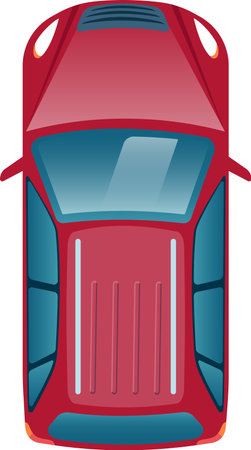Vehicle History and Documentation
Before falling for the charm of any second-hand motor in Britain, the first port of call should always be its paperwork. Nothing quite tells a car’s story like its records, and in Blighty, proper documentation is as crucial as a good cup of tea on a cold day. A thorough review of the vehicle’s service history provides insights into how well previous owners cared for it—look for regular stamps in the service book and receipts for major jobs done. Next, check MOT certificates to confirm the vehicle has consistently met safety and emissions standards; these annual tests are mandatory for cars over three years old and reveal advisories or recurring faults that could haunt you later. Most critically, examine the V5C logbook (sometimes called the ‘loggie’ by old hands) to ensure the seller is the registered keeper, the chassis number matches, and there are no glaring discrepancies in ownership history.
| Document | What to Look For | Why It Matters |
|---|---|---|
| Service History | Consistent records, stamped booklets, repair receipts | Proof of regular maintenance and any major repairs |
| MOT Certificates | No gaps in years, advisories addressed | Confirms roadworthiness and potential issues flagged early |
| V5C Logbook | Seller matches registered keeper, correct VIN, clear ownership chain | Legal proof of ownership; protects against buying stolen or cloned cars |
Remember, if any paperwork is missing or looks suspiciously new compared to the car’s age, walk away or proceed with extreme caution—dodgy documentation is often a sign of trouble lurking beneath that polished exterior.
2. Exterior and Bodywork Inspection
When buying a second-hand vehicle in Britain, giving the exterior and bodywork a thorough once-over is essential—after all, the unpredictable British weather is notorious for accelerating corrosion and wear. Begin your inspection by walking around the car slowly, keeping an eye out for rust, dents, scratches, and mismatched paintwork. Take particular care to check areas most vulnerable to corrosion such as wheel arches, sills, door bottoms, boot edges, and beneath the bonnet. Even minor bubbling under the paint may hint at deeper rust issues lurking beneath the surface. For those who appreciate the classics or enjoy a bit of old-school tinkering, remember that original factory paint will have subtle age-related patina, while newer panels with glossy finishes might suggest recent accident repairs or resprays.
| Area to Inspect | Common Issues | Why It Matters in Britain |
|---|---|---|
| Wheel Arches & Sills | Rust, stone chips | Road salt accelerates corrosion during winter months |
| Door Bottoms & Boot Edge | Bubbling paint, flaking metal | Frequent rain leads to trapped moisture and rust formation |
| Beneath Bonnet & Boot Lid | Mismatched paint, welding marks | May indicate previous accident repairs or panel replacements |
Don’t overlook panel gaps; inconsistent spacing could reveal poor-quality crash repairs. Use a magnet on steel panels—if it doesn’t stick evenly, there may be hidden filler underneath. Finally, pay attention to windscreen and window seals for cracks or perishing rubber—a small leak can lead to damp carpets and musty interiors thanks to our lovely British drizzle. By carrying out these checks with a keen eye and a bit of nostalgic appreciation for proper craftsmanship, you’ll avoid costly surprises down the road.

3. Engine and Mechanical Components
If you’re eyeing up a British classic or simply a trusty runabout, the engine is the heart that needs your closest attention. UK roads are often wet and salty, especially in winter, which means certain mechanical issues crop up more frequently than you might expect. When carrying out your inspection, make sure to:
- Check for oil leaks: Look beneath the car and around the engine bay. Persistent dampness or dark patches could point towards worn seals or gaskets – a common issue given Britain’s climate.
- Listen for unusual noises: A healthy engine should tick over smoothly. Rattles, knocks, or whining sounds can indicate deeper problems lurking within the block or ancillaries.
- Inspect the timing belt: If it’s frayed, cracked, or hasn’t been replaced according to the manufacturer’s schedule (often found in the service history), this could spell trouble. A snapped belt can cause catastrophic engine damage.
- Examine the exhaust system: Rust is the enemy here, particularly in areas where salt is liberally applied to icy roads. Look for holes, excessive corrosion, and listen for blowing sounds when the engine is running.
Common Engine and Mechanical Issues in UK Second-hand Vehicles
| Component | What to Check | Potential Problem |
|---|---|---|
| Oil Leaks | Under engine, sump area, seals | Poor sealing due to age or damp exposure |
| Timing Belt | Visual cracks, service records | Belt failure leading to major repairs |
| Exhaust System | Rust spots, holes, noise on acceleration | MOT failure, costly replacement required |
A thorough check of these components not only helps avoid unexpected repair bills but also ensures your new-to-you vehicle won’t leave you stranded on a rainy British morning. Don’t be afraid to ask for proof of recent work—receipts for timing belt changes or new exhausts add peace of mind. Remember: a little vigilance now saves hours in the garage later!
4. Tyres, Brakes, and Suspension
One of the most crucial aspects to examine when considering a second-hand vehicle in Britain is the condition of the tyres, brakes, and suspension. The unpredictable British weather and abundance of potholes on local roads mean these components are often put to the test. Start by ensuring all tyres have a legal tread depth—at least 1.6mm across the central three-quarters of the breadth of the tyre, around the entire circumference. Uneven wear patterns could indicate alignment or suspension issues, or even past accident damage.
Brakes should be responsive without any unusual noises or vibrations. During your inspection, press the brake pedal firmly; it should feel solid, not spongy. If possible, take the car for a short drive and listen for grinding or squealing sounds that may signal worn brake pads or discs.
The suspension is equally vital on British roads riddled with speed bumps and rough patches. Push down firmly on each corner of the vehicle—the car should rebound once and settle immediately. Multiple bounces suggest worn shock absorbers. Inspect under the car for any leaking fluid from the shocks or struts.
If you’d like a quick reference guide, here’s a handy checklist:
Component |
What to Check |
Potential Issues |
|---|---|---|
| Tyres | Legal tread depth (≥1.6mm), even wear, no cracks or bulges | Worn tyres, uneven wear from misalignment or worn suspension |
| Brakes | Responsive pedal, no noise, discs & pads condition | Spongy pedal, grinding or squealing noises |
| Suspension | No excessive bouncing, inspect for leaks and damaged bushes | Poor handling, knocks or rattles over bumps |
This thorough check will help you avoid costly repairs and ensure your next classic runabout handles Britain’s challenging roads safely.
5. Interior and Electrics
When it comes to British motoring, the interior of a car tells its own story—whether it’s the lingering aroma of old leather or the subtle patina on classic switchgear. Before handing over your hard-earned pounds for a second-hand vehicle, take time to scrutinise both the cabin’s condition and all electrical components. Flick every switch and press every button: from the headlights and indicators to the heater blower (essential for those misty mornings), heated seats, infotainment system, and even the humble window winder. British weather is notorious for water ingress; check footwells and under mats for dampness or telltale signs of mould, which could indicate leaky seals or past flooding. Ensure there’s no excessive wear on seat bolsters, steering wheels, or gear knobs—a well-kept interior often reflects careful ownership. Here’s a quick reference table to guide your checks:
| Component | Check For | Common Issues |
|---|---|---|
| Lights (Headlights/Indicators) | All bulbs work; lenses clear | Mist in lens, blown bulbs |
| Heater & Demister | Fan speeds operate; warm air produced | No heat, weak airflow |
| Infotainment System | Radio, sat-nav, Bluetooth function | No sound, screen glitches |
| Windows & Mirrors | Electric/manual operation smooth | Sticking, non-operational motors |
| Seats & Upholstery | No rips/tears; adjusters work | Excessive wear, broken mechanisms |
If you spot anything untoward or if something doesn’t seem to function as it should, don’t be shy—ask the seller for an explanation or consider negotiating on price. Remember: a tidy cabin and working electrics make every journey across Britain—be it through bustling London streets or winding Cotswold lanes—all the more enjoyable.
6. Test Drive and Handling
Before you hand over any hard-earned quid, taking the car out for a proper spin is absolutely vital. In Britain, with our winding country lanes, bustling high streets, and sometimes unpredictable weather, a test drive isn’t just a formality—it’s essential for sussing out the motor’s true condition. Make sure your route includes a mix of urban stop-start traffic, dual carriageways, and if possible, some twisty B-roads to get a genuine feel for how the car performs in real-world British conditions.
What to Assess During Your Test Drive
| Component | What to Look For | Common British Issues |
|---|---|---|
| Clutch Action | Smooth engagement, no slipping or juddering | Stop-start traffic wear, hill starts in hilly towns |
| Gear Changes | Crisp shifts without crunching or resistance | Worn synchros from frequent shifting on short trips |
| Steering Response | Direct feel, no excessive play or vibration | Pothole damage or tracking misalignment from rough roads |
| Brakes | Strong, even braking with no pulling or grinding noises | Damp-related corrosion from British weather, worn pads/discs |
| Suspension & Ride Comfort | No knocking sounds or excessive bouncing over bumps | Wear from speed bumps and uneven tarmac common in UK towns |
| Overall Driving Feel | No unusual noises; comfortable and confident handling at all speeds | Squeaks/rattles from old interiors due to damp and age |
Pro Tip: Listen and Observe Like an Old-Hand Mechanic
Roll down the windows—yes, even in drizzle—and listen for knocks, rattles or squeaks that might be muffled by the radio or air-con. Pay attention to how the car tracks down the road; does it pull to one side? How does it handle those infamous British potholes? Don’t be afraid to use your nose as well—a whiff of burning oil or clutch can spell trouble ahead.
A Nod to Nostalgia: The Classic Car Test Drive Ritual
If you’re eyeing something with a bit of patina—a cherished Mini or an old Rover—the test drive becomes even more important. Older motors often have their own quirks: a slightly notchy gearbox here, a faint whine from the diff there. These aren’t always deal-breakers but knowing what’s normal for the model versus what signals a costly fix is key. Bring along someone with experience if you’re unsure—they’ll know if that classic “character” is simply part of its charm or a sign it needs TLC.
7. Negotiation and Price Comparison
Once you’ve thoroughly checked the vehicle’s condition, paperwork, and history, it’s time to sharpen your negotiation skills. In Britain’s second-hand car market, being well-informed is your greatest asset. Start by comparing similar models on trusted sites like Autotrader or within your local classifieds, paying close attention not just to price but also to mileage, service history, and overall condition. This benchmarking gives you a realistic sense of what constitutes fair value for the specific make and model you’re considering.
Key Factors to Compare
| Feature | Your Chosen Car | Similar Listing A | Similar Listing B |
|---|---|---|---|
| Mileage | [Insert Value] | [Insert Value] | [Insert Value] |
| Year of Registration | [Insert Value] | [Insert Value] | [Insert Value] |
| Service History | [Full/Partial/None] | [Full/Partial/None] | [Full/Partial/None] |
| Condition | [Excellent/Good/Fair/Poor] | [Excellent/Good/Fair/Poor] | [Excellent/Good/Fair/Poor] |
| Asking Price (£) | [Insert Value] | [Insert Value] | [Insert Value] |
The British Approach to Haggling
When negotiating, remember that a polite but firm approach often works best in Britain. Point out any discrepancies or issues you’ve discovered—whether it’s an incomplete service record or worn tyres—and use these as leverage for a reduction in price. Don’t be afraid to walk away if the seller won’t meet you at a reasonable figure; there are plenty of motors out there.
Checklist for Effective Negotiation
- Compare at least three similar listings for reference.
- Document any faults or missing paperwork as bargaining points.
- Mention recent MOT advisories or pending maintenance costs.
- Avoid emotional attachment—be prepared to move on if necessary.
- If possible, bring a knowledgeable friend or mechanic along for support.
Remember:
A well-researched buyer stands a far better chance of securing a proper British bargain. Take your time, trust your instincts, and don’t rush into sealing the deal until the numbers—and the motor—feel right.

